What can we learn from comparing video models to human brains, arguably the most efficient and effective video processing systems in existence?
We take a step towards answering this question by performing the first large-scale benchmarking of deep video models on representational alignment to the human brain, using publicly available models and a recently released video brain imaging (fMRI) dataset.
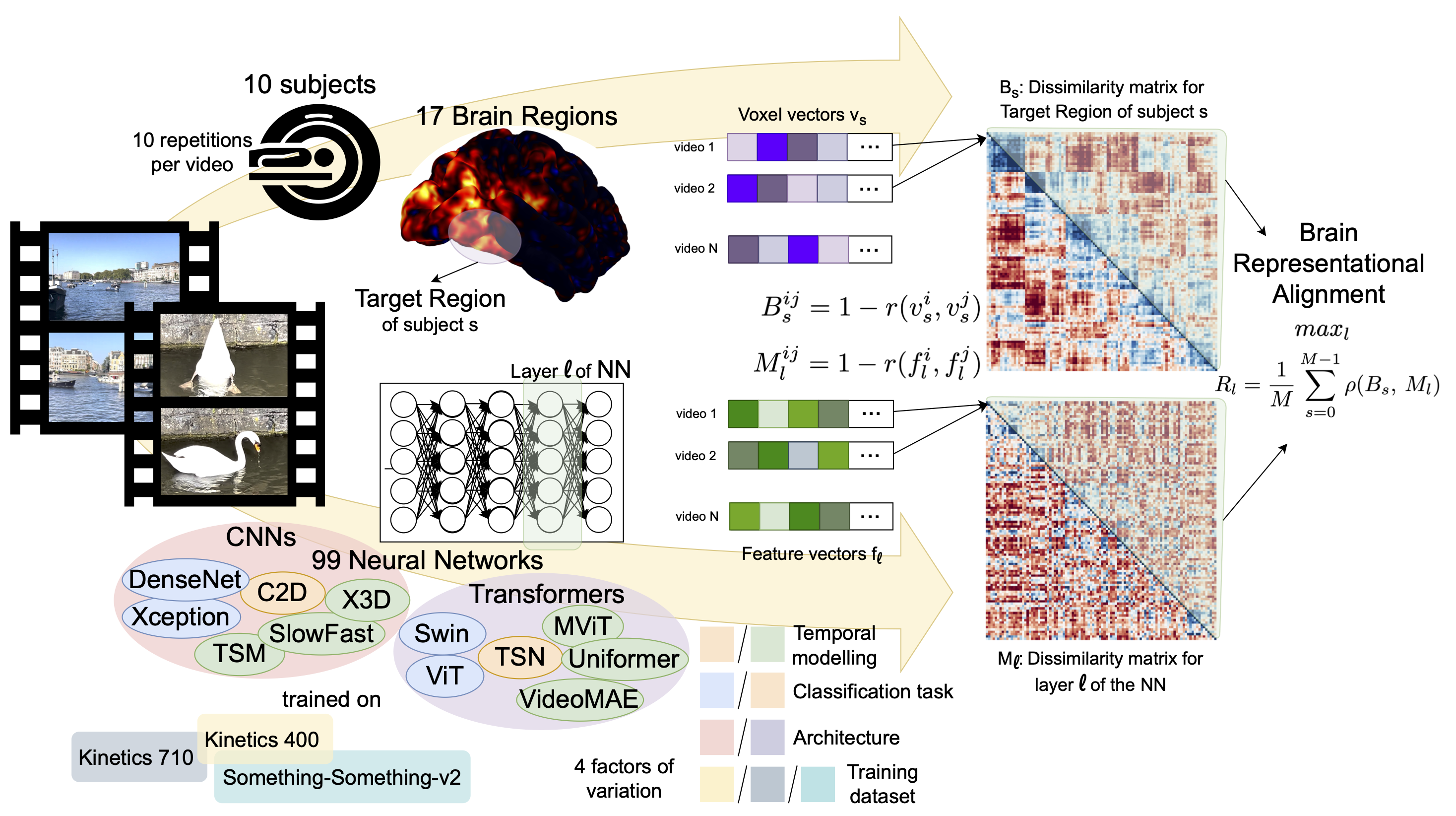
👉 We disentangle 4 factors of variation:
1. Temporal modeling − 2. Classification task
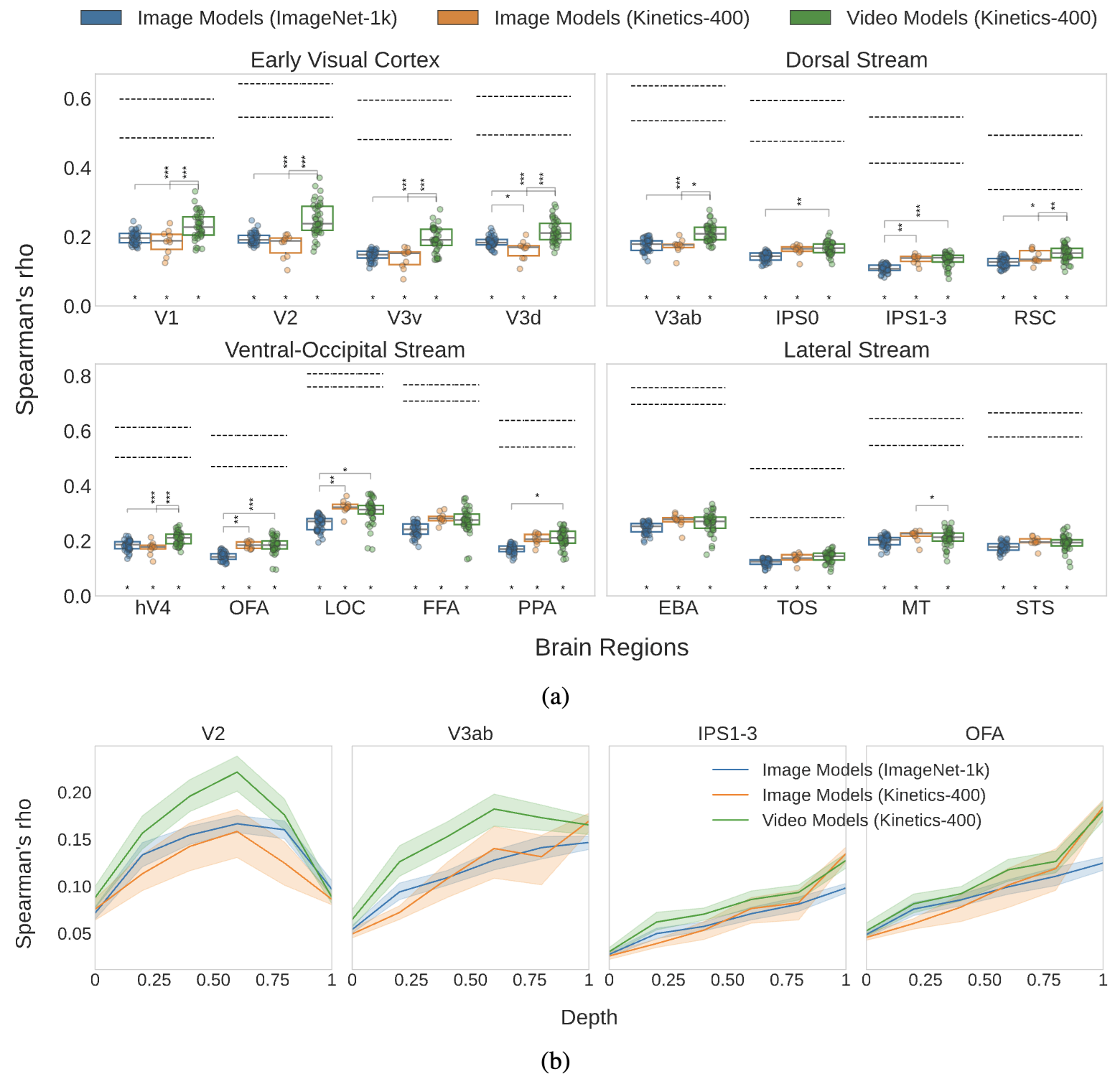
Temporal modeling found important for alignment to early brain regions, while action recognition classification task to late regions
3. Architecture

CNNs and Transformers are mostly equivalent in maximum score, but display interesting layer-wise differences
4. Training dataset
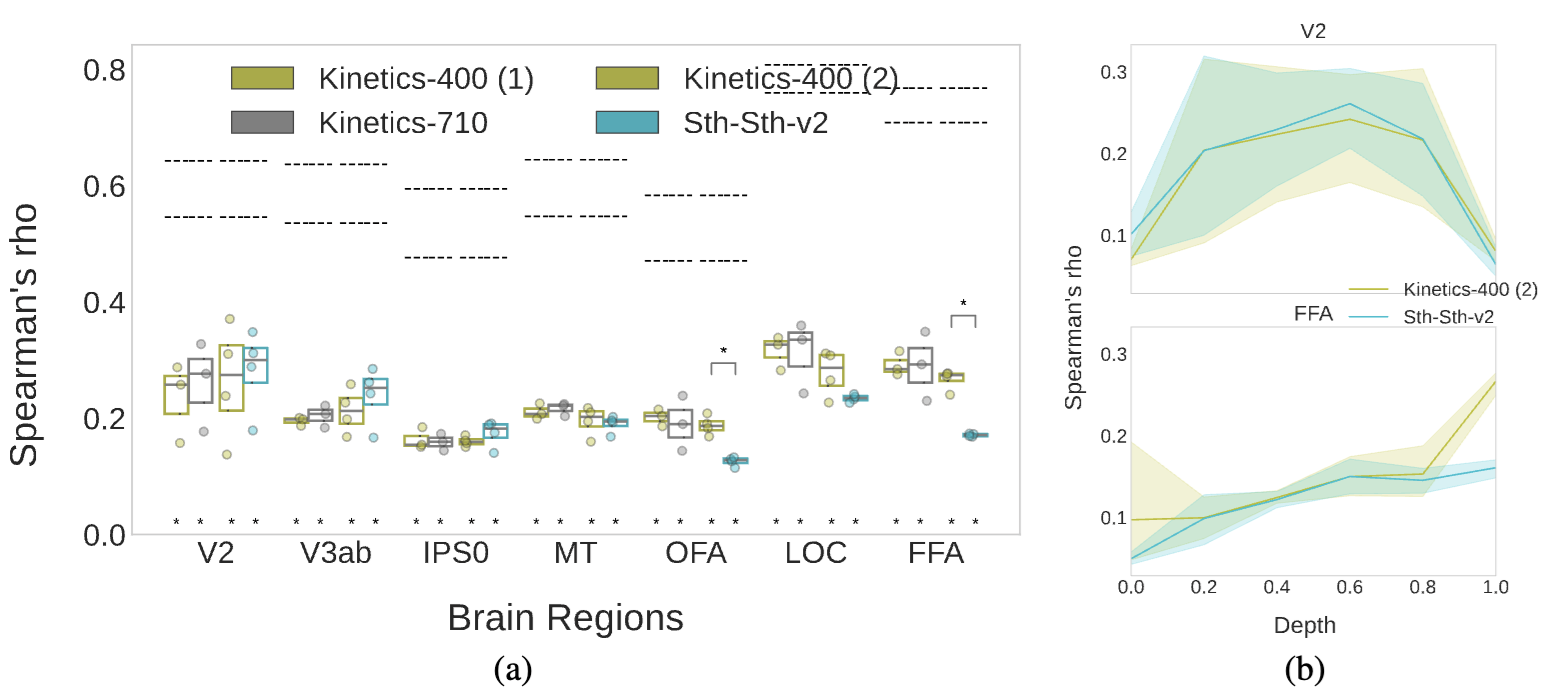
There is a distinct effect of training biases on alignment to functionally selective regions
👉 We rank the models in terms of brain alignment:
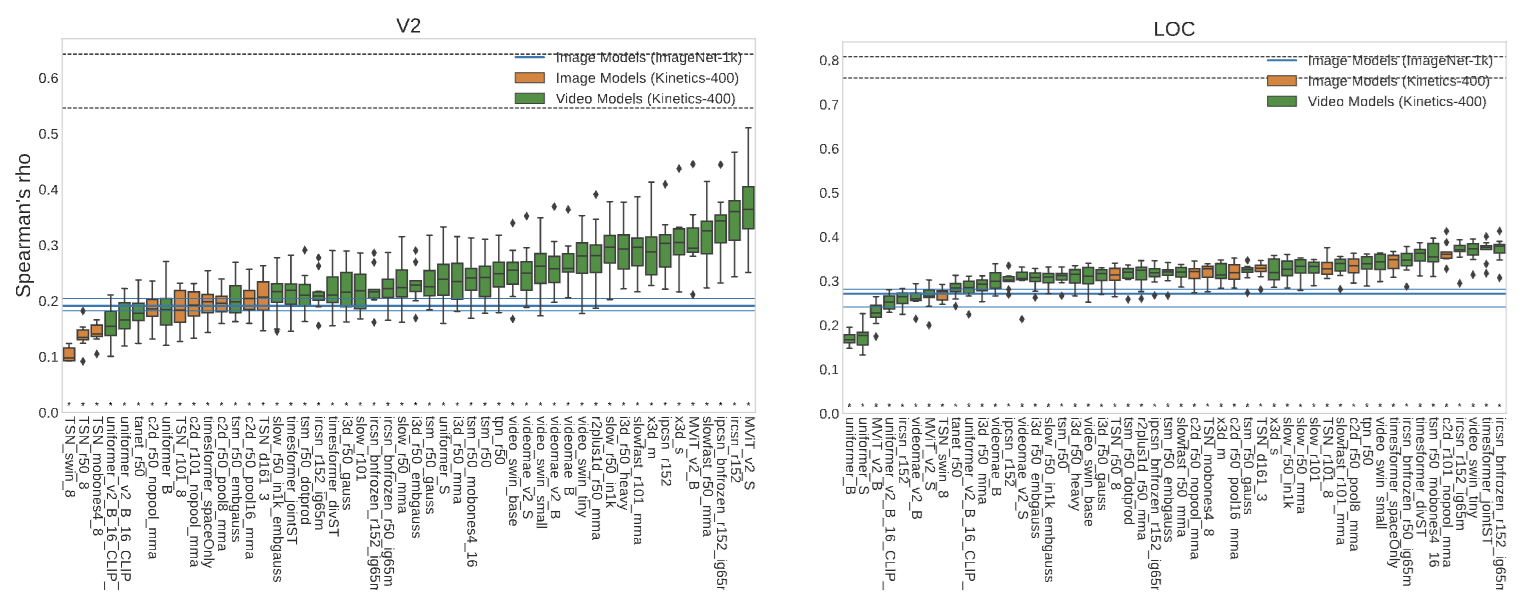
👉 And we relate their brain alignment to their computational complexity:
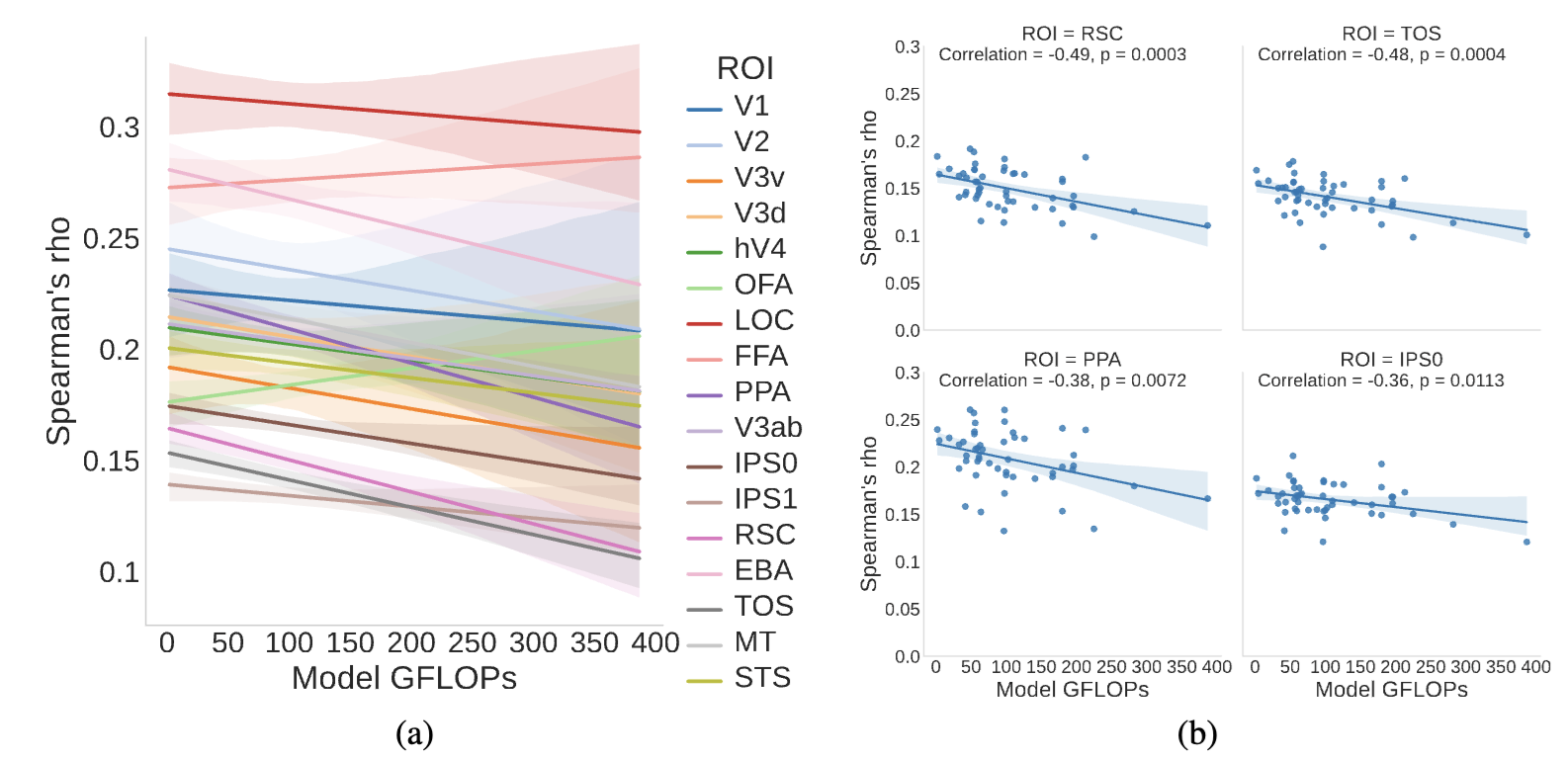
BibTeX
@inproceedings{
sartzetaki2025one,
title={One Hundred Neural Networks and Brains Watching Videos: Lessons from Alignment},
author={Christina Sartzetaki and Gemma Roig and Cees G. M. Snoek and Iris Groen},
booktitle={The Thirteenth International Conference on Learning Representations},
year={2025},
url={https://openreview.net/forum?id=LM4PYXBId5}
}

 Paper
Paper
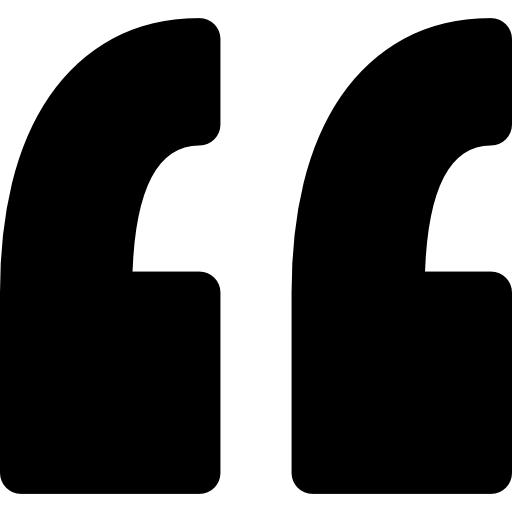 Cite
Cite